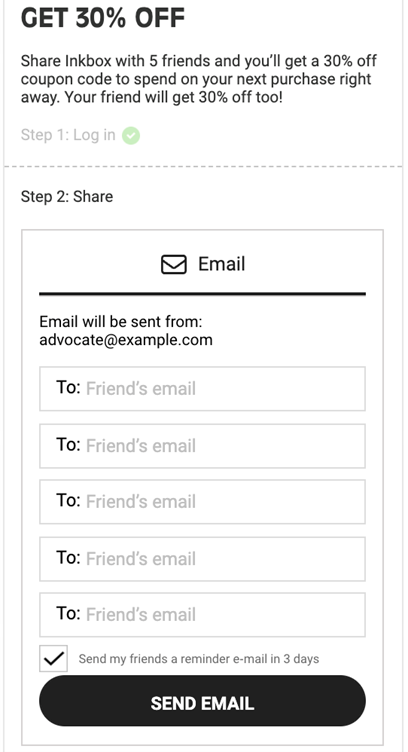
This is a guest post from Talkable, a referral marketing solution and BHN Rewards partner.
Finding the right incentive for your referral program is about finding the perfect balance. On one hand, the reward should be attractive enough for customers to share the referral offer and purchase the product. On the other hand, it shouldn’t hurt your bottom line. You’re probably also asking yourself, “Should the referral discount be the biggest one on the website?” or, “Should we offer free products instead of discounts?”
Talkable has helped hundreds of e-commerce brands build and optimize high-performing referral programs. The Talkable team shares their expertise on how to find the perfect reward for your brand’s referral program.
READ MORE: Tips for Building a Successful B2B Referral Program
Before jumping into what types of rewards and discounts you can use, it’s a good idea to step back and look at the referral program in the context of your brand and customer experience. Factors to consider when designing a reward for referral program incentives include:
Ongoing-invite campaigns that offer rewards only for advocates (customers who refer their friends) or only for friends (new customers who join through the referral link).

A classic referral campaign that works well for brands is an offer such as “Get $20, Give $20.” This is a so-called double-sided campaign that rewards both advocates and friends.

Pro Tip: When choosing between one-sided and double-sided rewards, we always recommend the latter. Talkable tested campaigns with and without friend rewards and discovered something surprising: When brands offered a friend a higher reward than the advocate, advocacy rates increased.

Referrals with limited-time offers and higher rewards help activate customers who have not yet joined your referral program. Talkable recommends running burst campaigns at least once a quarter for no longer than a week. They’re a great way to increase advocacy and share rates!
There is no one-size-fits-all solution, so we’ll look at the most common incentives and share time-proven do’s and don’ts for rewarding customers.
The most common types of incentives in referral campaigns are:
Pro Tip: You could use a mix of incentive types in one referral program campaign. This keeps customers engaged and delighted, especially for brands with long periods of time between purchases. For example, a mattress company runs a referral campaign that offers the advocate a $100 Visa gift card, while the friend receives 15% of their first mattress purchase.
Talkable powers referral programs for over 250 e-commerce brands, and has accumulated exclusive insights into what type of discounts and rewards work best for referrals.
Follow the golden rule: Talkable’s best practice for incentives is to start with rewards that equal 20% of your average order value (AOV).
Increasing rewards to stimulate sharing and conversion usually works for most brands. For example, bag and luggage brand Kipling ran a 20% vs. 25% offer test. The higher offer received a 30% growth in conversion on the post-purchase page and 37% in conversion for all campaign placements.
Tula offers a double reward to advocates to increase the referral rate. The results? A 45% higher advocacy rate and nine times more customers.


A great way to motivate advocates to refer more is a tiered reward system, which offers a higher reward for a higher number of referred friends. It builds brand love for already engaged and excited customers and serves as an added incentive to get them to share.
Inkbox offers an even simpler solution (below right), motivating advocates to share with more friends by providing a higher reward and a customized sharing form with five email fields.



Adding instant rewards helps increase the sharing rate and the advocate’s desire to get their referred friend to a purchase decision. Psychology tells us that people prefer smaller, immediate rewards to larger rewards that are delayed. The longer a reward is delayed, the more its value decreases in the eyes of the recipient. In addition, giving actual rewards is more successful than offering discounts, according to research by Blackhawk Network and Aberdeen. Consumers prefer to receive rewards over discounts, citing reasons such as the ease and convenience of claiming them (53%) and the opportunity for personalization (49%). Companies that used reward-based promotions see a 10% higher redemption rate compared with discount-based promotions.


There is no universal formula for a successful referral campaign incentive. Talkable always recommends doing A/B tests and continuing to optimize until you reach the desired result.
Want help building or optimizing your referral rewards program? Contact Talkable or BHN Rewards for more information!